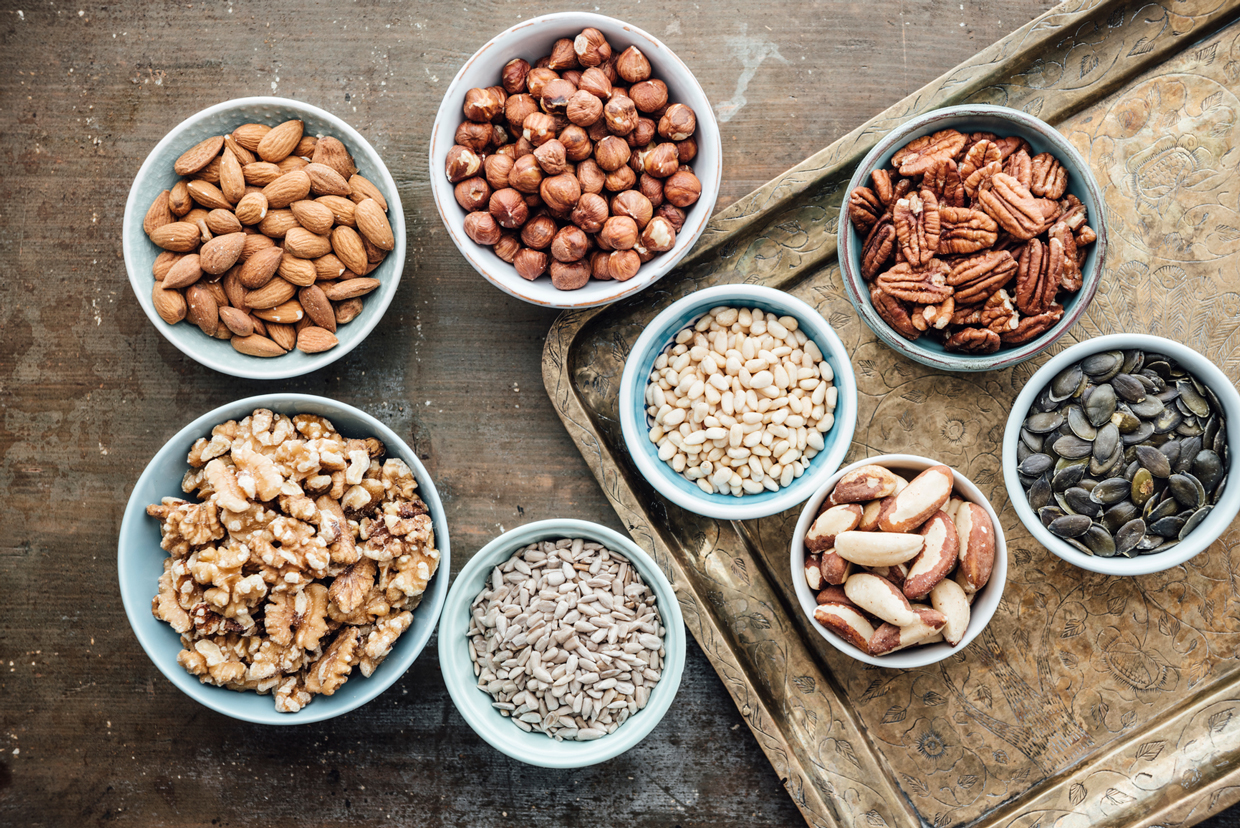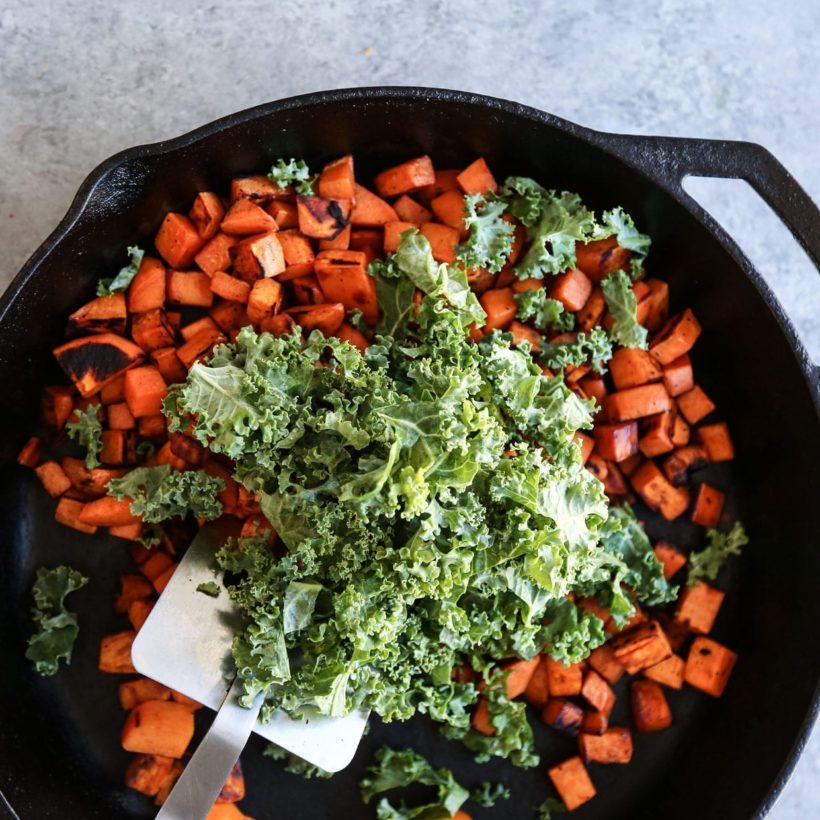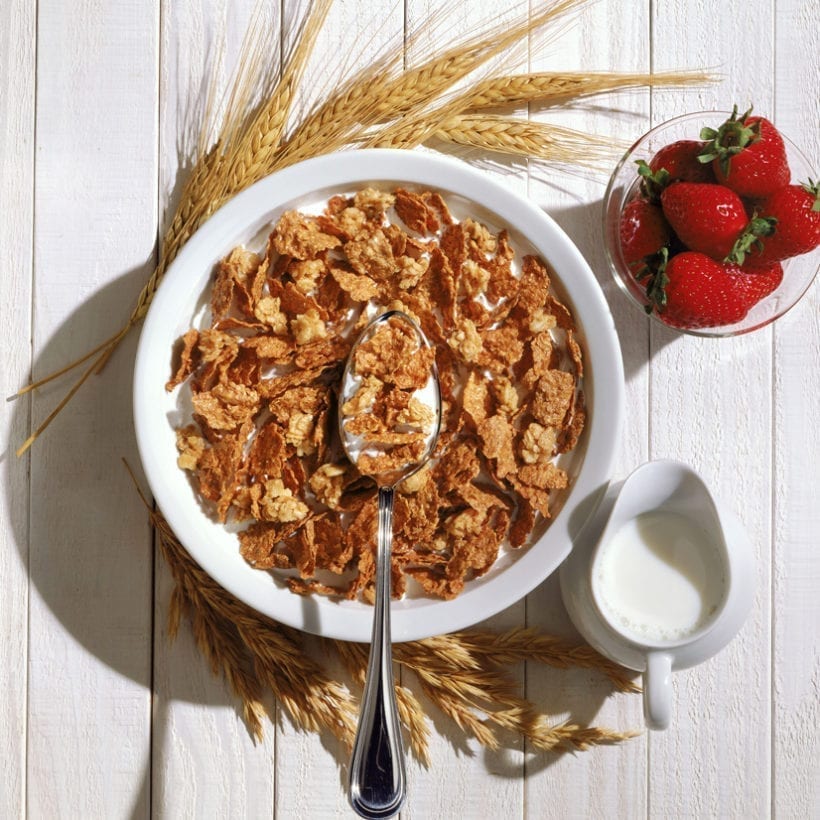You’re probably familiar with fiber, one of the three macronutrients next to fat and carbohydrate that our bodies need to regulate optimally. Fiber, specifically, is responsible for lowering your body’s level of inflammation, keeping hunger at bay, aiding in digestion, regulating your blood sugar, and lowering your cholesterol — pretty important stuff!
Unfortunately, Americans aren’t getting their fair share of this all-important nutrient. In fact, according to a recent study presented at The American Society for Nutrition’s NUTRITION 2021 LIVE ONLINE webcast, only 7 percent of American adults are getting their recommended daily intake of fiber.

If your body doesn’t get its fair share of fiber each day — 25 grams per day for most adults, per the American Heart Association (AHA) — you run the risk of digestive distress, low blood sugar, and a rise in cholesterol levels for starters. What goes hand in hand with all of these (and more), according to functional nutritional therapy practitioner Tansy Rodgers, F.N.T.P., is that if you are struggling to lose weight, it could be because of a lack of fiber. “Blood sugar regulation, detoxification, digestive balance, and healthy gut health are all important components of maintaining a healthy weight,” she says. “A lack of fiber to support those pathways to maintaining a healthy weight can cause big health complications down the road.”
Whether you think you’re running low on fiber or just hoping to make sure you’re getting enough, here are some convincing reasons to do so, according to experts.
It helps keep your blood sugar in check
If there was one time of year to hone in on blood sugar control, it’s definitely the wintertime, when holiday parties are in full bloom and festive family gatherings usually feature a bevy of sugary desserts.
Luckily, having more fiber-rich, in-season produce this winter can help stabilize your blood sugar and help to stave off some of those sugar cravings, explains Rodgers. One simple way she recommends adding more fiber into your diet is by incorporating recipes that feature seasonal produce, such as brussels sprouts, apples, carrots, cabbage, celery, beets, and sweet potatoes. “Get creative with them and use a lot of spices and flavors to create satiety while you are getting all the health benefits of fiber,” she adds.

It helps prevent winter blues
If you’ve ever felt more depressed during the winter months, it’s no coincidence. Seasonal Affective Disorder (SAD) affects an estimated 5 percent of U.S. adults, per Mental Health America, and is a depressive behavior that is associated with the beginning of fall and throughout the winter months. Luckily, a diet rich in fiber can help. In fact, a study published in the journal Nutrition Research found that the anti-inflammatory abilities of a high-fiber diet can help reduce the symptoms associated with depression. Lauren Harris-Pincus, R.D.N., founder of NutritionStarringYOU.com and author of The Everything Easy Pre-Diabetes Cookbook, recommends incorporating a combo of lots of fruits, veggies, whole grains, nuts, beans, and seeds to hit your daily goals of 25-35 grams of fiber.
It helps you minimize those winter munchies
Colder, shorter days are the perfect recipe for convincing us that we should skip our workout and stay on the couch instead. We’ve all been there. And most of us also turn to comfort foods to give us back the warmth we feel we’ve lost from the frigid temperatures. One of the best ways to minimize munchies and potentially even shed some pounds is to consume lots of fiber-rich foods, as they can help stabilize blood sugar which keeps us more satisfied and less likely to dive into the cookie jar, notes Harris-Pincus. Easy ways to add in fiber that she recommends include snacking on homemade trail mix with whole-grain cereal, nuts, and seeds, adding fruit and nuts to oatmeal, using whole grain flour to make waffles and pancakes, and leaving the skin on homemade baked fries or sweet potato fries and adding black beans.

It may give you a winter glow
Elements of this season, including colder temperatures, harsh winds, less moisture in the air, and dry air caused by indoor heating, can wreak havoc on our skin. For healthy skin, eating fiber has an important supporting role. “In order for our bodies to properly utilize the nutrients from food during digestion, fiber helps transport the nutrients and keeps the organs of the digestive system and the gut biome healthy so that the nutrients that keep our skin glowing can be fully absorbed,” explains Marvin Nixon, M.S., N.B.C.-H.W.C., health, and wellness coach, certified nutrition consultant and personal trainer. “There is also evidence that an unhealthy gut biome is a factor in acne and prebiotic fiber helps keep the healthy bacteria in our gut happy and active.”
It may boost your immune system
Winter is a great time to focus on strengthening your immune system because we are more exposed to certain illnesses during this time of year, mainly because we spend all our social interactions indoors.
“Seventy to 80 percent of your immune system is housed in your gut, which makes gut health extremely relevant to staying well throughout the cold and flu season,” says Harris-Pincus. “Consuming fiber, especially fermentable prebiotic fiber, such as onions, garlic, leeks, bananas, asparagus, barley, and oats, provides an excellent fuel source for the ‘good’ bacteria in our gut.”
We only recommend products we have independently researched, tested, and loved. If you purchase a product found through our links, Sunday Edit may earn an affiliate commission.







